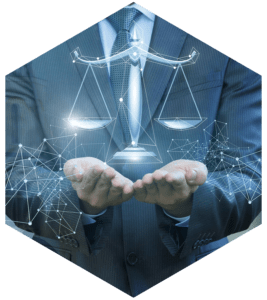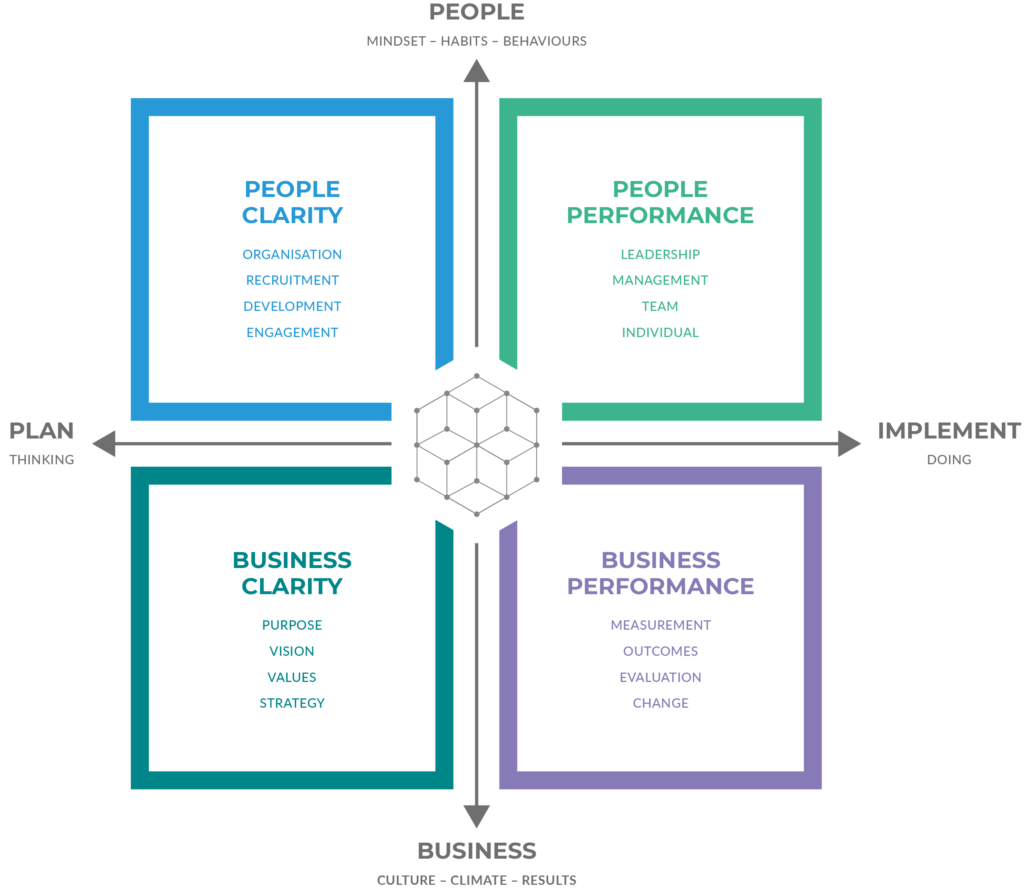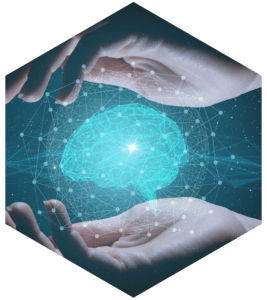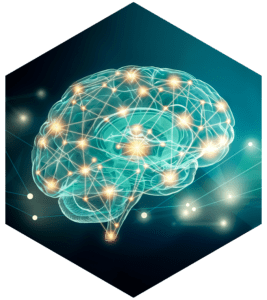How we do it
“Balancing competing demands”
There are two key paradoxes in business:
- There is always a tension between planning and implementation. In reality, most business leaders are so busy with day-to-day demands, they tend to neglect the planning side and as a consequence, suffer frustrations around under-performance. This lack of balance becomes a vicious cycle that is hard to break and causes immense stress.
- Research has shown that our brains are only capable of focusing on either people and relationships, or business and results. This means that leaders can only focus on one or the other at any time. The more we focus on people, the less we are able to focus on the business. This creates an imbalance in favour of one aspect or the other.
Drawing on our combined 50 years of consulting experience, we have developed our own model, to ensure that business leaders focus on the right things at the right time, balancing competing demands and never losing sight of the complete picture.

The Clarity Matrix

The Clarity Matrix explores four key perspectives of your business, identifying areas of risk and opportunities for improvement:
Business Clarity
Clarifying the purpose, vision, values and strategy of the business.
People Clarity
Focusing on hiring and retaining the right people for the business as well as developing and engaging your most valued people.
People Performance
Cultivating an environment of growth mindset, accountability, collaboration and effective decision-making.
Business Performance
Measuring, evaluating and reviewing performance outcomes to identify opportunities to drive change and continuous improvement.

Your brain and your behaviour
70,000 years of very gentle evolution have helped us become the most successful species on the planet. However, the last 70 years have seen unprecedented change in the way we live and work, but our brains are still almost the same as they were 70,000 years ago. This means that most of our behaviour is based on responding to very basic threats and rewards.
We use the latest developments in applied neuroscience and psychology to help you understand your people’s and your own mindset, habits and behaviours from a number of perspectives. We use this insight so you can clarify complexity, nurture your people and drive continuous improvement.
Neuroplasticity
It is now possible to study the brain in new ways that highlight what is really going on and how we can become even more effective. For example, we can change the way our brain operates and learn new things even into old age, this is called neuroplasticity.
Each of us is wired differently but with the right motivation and effort we can learn to understand why we think the way we do and make little changes that improve communication, motivation, engagement and productivity.
Business performance depends upon people performance. People performance is driven by the mindset, habits and behaviours each of us has developed. Wise leaders and managers are learning about ‘brain-friendly’ approaches that get the best from everyone including themselves.

There are two theories that underpin our work around the brain and changing behaviour:
Enjoyment Performance Theory
As part of our approach we use Harrison Assessments wherever we think it’s helpful to provide insights into mindset, habits and behaviours. This approach was developed by Dr Dan Harrison over 30 years of research. It gives you a very powerful, flexible and totally customisable tool to understand your people, teams and business culture.
The Harrison approach is based on Enjoyment Performance Theory, not personality theory. This means it gives you a snapshot of current motivation, values, mindset, habits and behaviours, so you can find and develop people who will enjoy the tasks and responsibilities in a specific role. The research shows that the more people enjoy their work, the more productive they will be.
Paradox Theory
The modern world is full of contradictions and tensions. For example, should you focus on planning or implementation? Should you focus on people or results? Paradox theory helps you to recognise the benefits of ‘both/and’ thinking as well as the unintended consequences of ‘either/or’ thinking. This means you can understand and transform your mindset, habits and behaviours by making small adjustments and become even more effective.
For example the sport of yacht racing needed to overcome a paradox in order to increase speed. A wide hull gives stability but a narrow hull gives speed. Ingenious designers resolved this paradox with the catamaran which offers ‘both’ speed ‘and’ stability.


